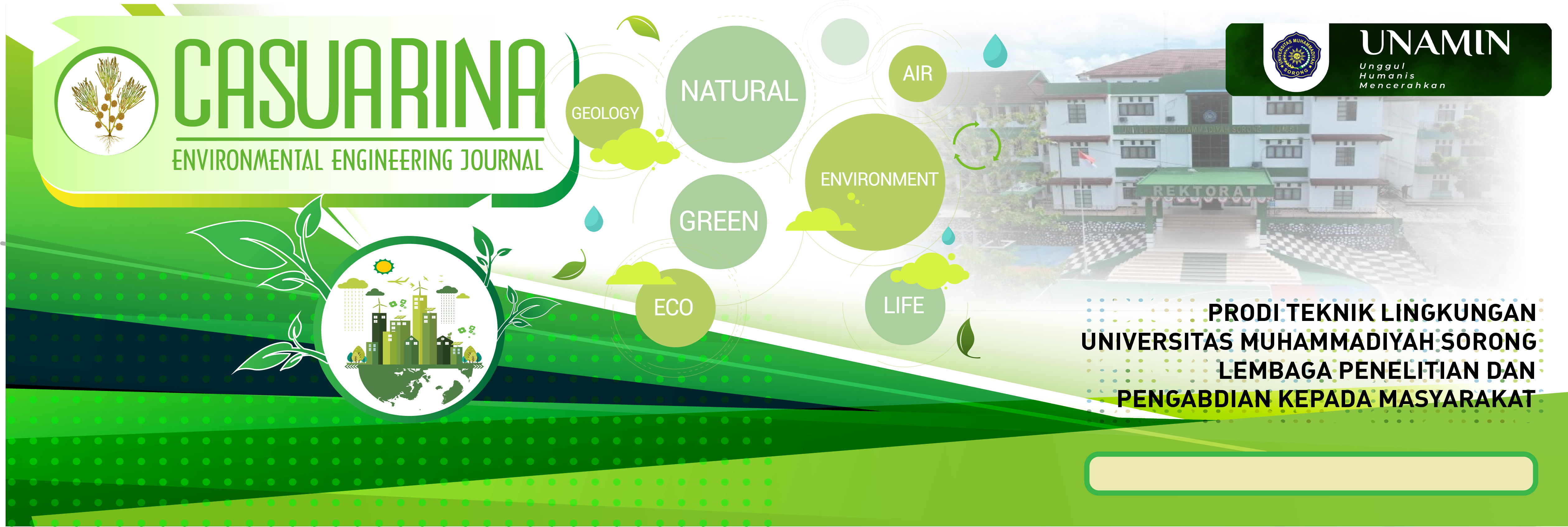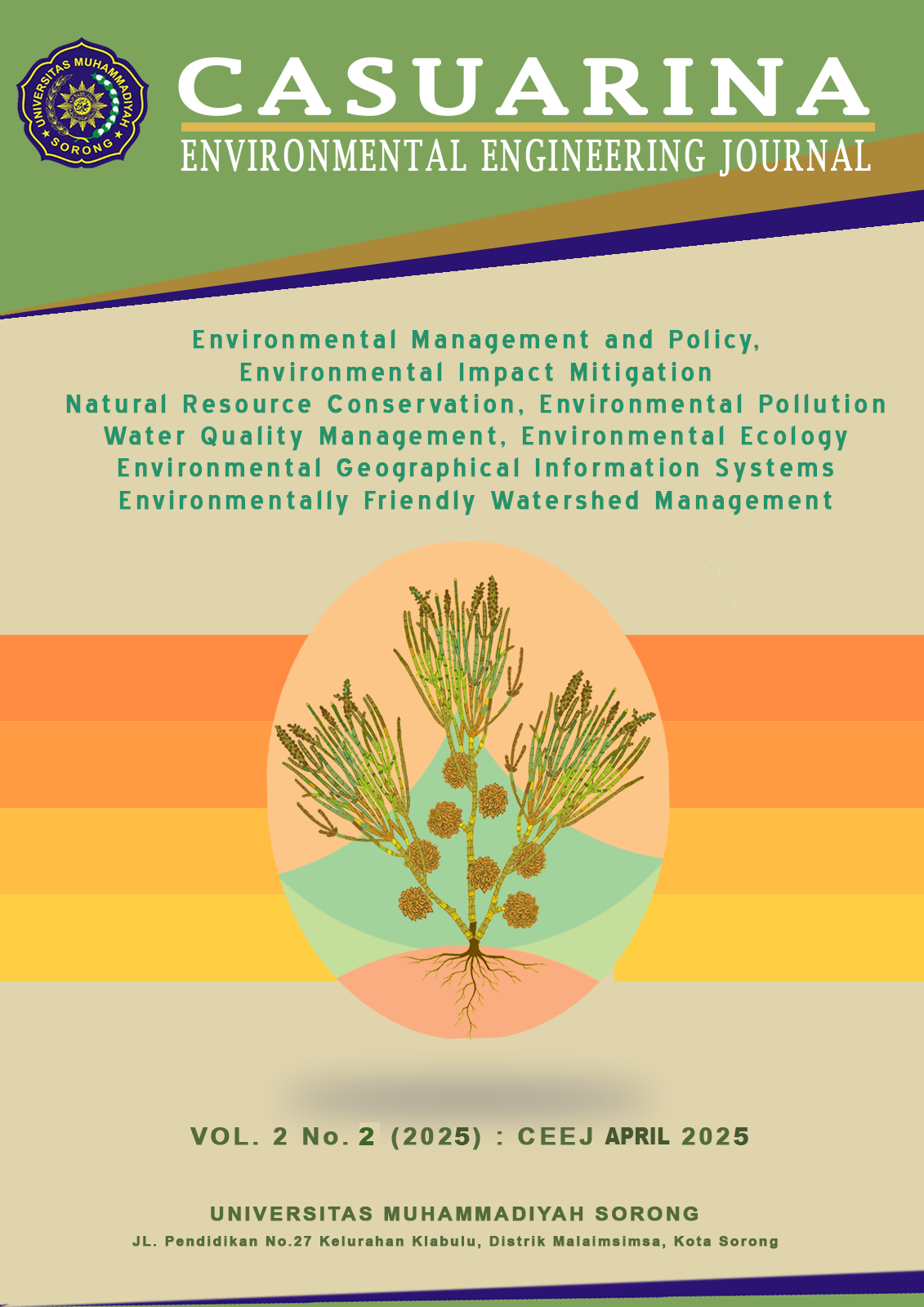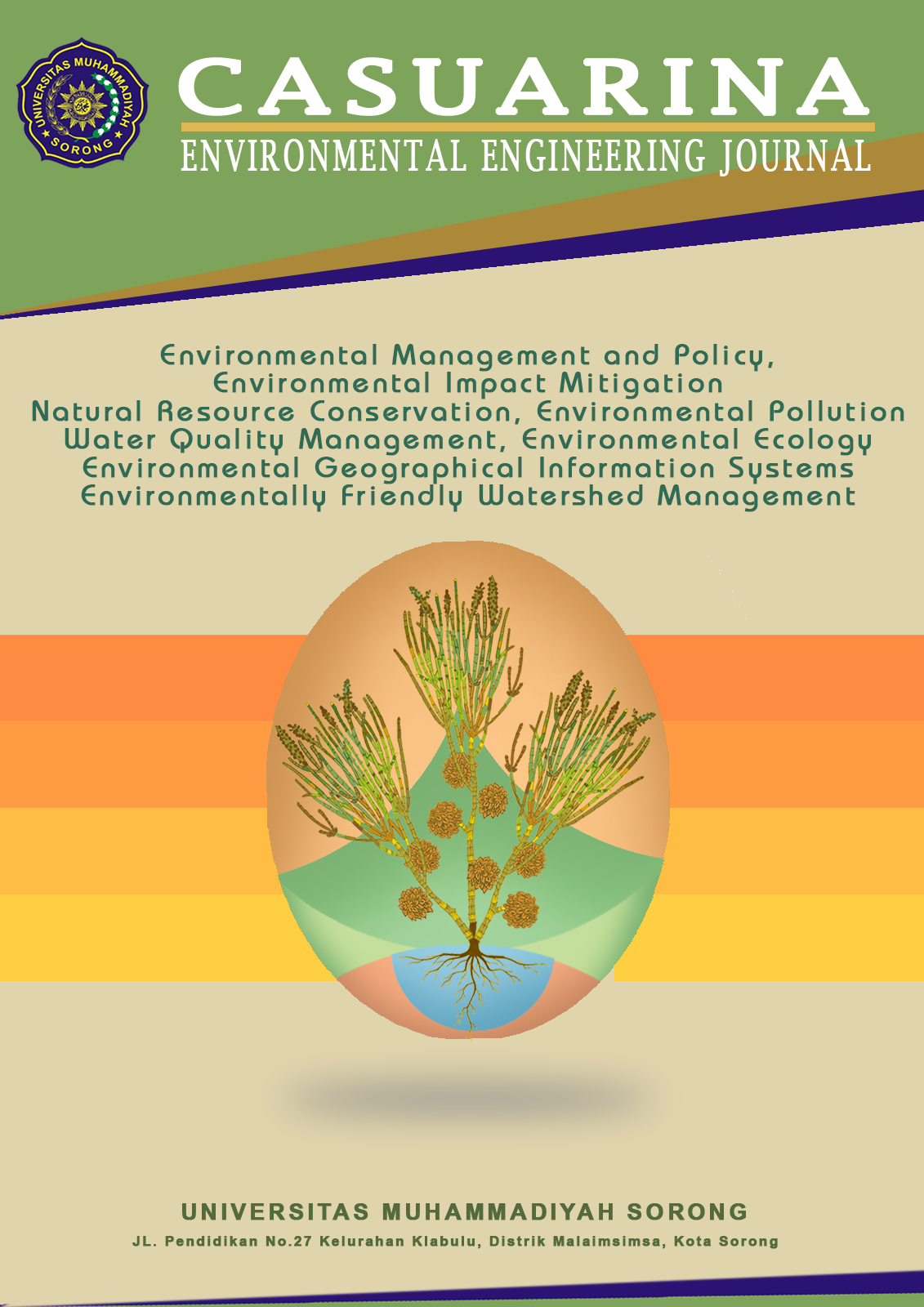PERANCANGAN DAN EVALUASI SISTEM LOSIDA (LODONG SISA DAPUR) UNTUK PENGELOLAAN SAMPAH ORGANIK RUMAH TANGGA
Evaluasi Sistem pengelolaan sampah organik (metode LOSIDA)
Kata Kunci:
Composting, Household Composting, Losida, Organik Waste, Waste Managemen systemAbstrak
Penelitian ini mengkaji implementasi sistem LOSIDA (Lodong Sisa Dapur), sebuah sistem pengelolaan sampah organik terintegrasi, di Universitas Muhammadiyah Sorong. Menggunakan pendekatan eksperimental kuantitatif, penelitian berfokus pada evaluasi desain sistem, analisis proses pengomposan, dan karakterisasi produk akhir. Sistem LOSIDA yang dibangun menggunakan pipa PVC 4 inci dengan lubang aerasi strategis menunjukkan efektivitas dalam mengkonversi sampah organik rumah tangga menjadi kompos berkualitas selama periode tiga bulan. Integrasi sistem pengomposan dengan media tanam menciptakan siklus nutrisi tertutup yang efisien, memungkinkan pemanfaatan langsung hasil dekomposisi. Hasil penelitian menunjukkan keberhasilan degradasi bahan organik dengan pengelolaan rasio C/N optimal (25:1) dan kontrol aerasi yang tepat. Kompos akhir menampilkan karakteristik fisik yang diinginkan, termasuk tekstur remah yang homogen dan warna cokelat kehitaman, mengindikasikan kandungan humus yang baik. Penelitian ini memvalidasi LOSIDA sebagai solusi praktis untuk pengelolaan sampah organik rumah tangga yang berkelanjutan di wilayah perkotaan.
Referensi
[1] Irawati and M. F. Arianto, “Faktor yang Berhubungan dengan Perilaku Masyarakat Membuang Sampah Rumah Tangga di Kanal Viktori Kota Sorong,” Penelit. Kesehat. Suara Forikes, vol. 12, pp. 349–353, 2021, doi:
http://dx.doi.org/10.33846/sf12330.
[2] E. E. Pramiarsih et al., “Pengelolaan Sampah Organik Rumah Tangga Menggunakan LOSIDA (Lodong Sisa Dapur) Di Dusun Drono Sleman Daerah Istimewa Yogyakarta,” J. Pengabdi. Mandiri, vol. 2, no. 5, pp. 1107–1112, 2023.
[3] L. N. Haliza et al., “Pengolahan Sampah Organik Rumah Tangga Menggunakan Losida (Lodong Sisa Dapur) Di Dusun Pisangan Sleman Daerah Istimewa Yogyakarta,” IJOH Indones. J. Public Heal., vol. 1, no. 2, pp. 98–102, 2023, doi: 10.61214/ijoh.v1i2.59.
[4] R. Y. Lesmana, G. I. Tawaqal, and Diharyo, “Pembuatan dan Pemasangan ‘LOSIDA’ (Lodong Sisa Dapur), Sebagai alternatif Pembuatan Kompos dan Pupuk Cair di Perumahan Masyarakat Jl. Kembang Kersen 3 Kota Palangka Raya,” 2024.
Unduhan
Diterbitkan
Cara Mengutip
Terbitan
Bagian
Lisensi
Hak Cipta (c) 2025 Casuarina: Jurnal Teknik Lingkungan

Artikel ini berlisensiCreative Commons Attribution-NonCommercial-ShareAlike 4.0 International License.
Please find the rights and licenses in Casuarina: Environmental Engineering Journal. By submitting the article/manuscript of the article, the author(s) agree with this policy. No specific document sign-off is required.
1. License
The non-commercial use of the article will be governed by the Creative Commons Attribution license as currently displayed on Creative Commons Attribution-NonCommercial-ShareAlike 4.0 International License.
2. Author(s)' Warranties
The author warrants that the article is original, written by the stated author(s), has not been published before, contains no unlawful statements, does not infringe the rights of others, is subject to copyright that is vested exclusively in the author, and free of any third party rights, and that any necessary written permissions to quote from other sources have been obtained by the author(s).
3. User/Public Rights
Casuarina: Environmental Engineering Journal's spirit is to disseminate articles published are as free as possible. Under the Creative Commons license, Casuarina: Environmental Engineering Journal permits users to copy, distribute, display, and perform the work for non-commercial purposes only. Users will also need to attribute authors and Casuarina: Environmental Engineering Journal on distributing works in the journal and other media of publications. Unless otherwise stated, the authors are public entities as soon as their articles got published.
4. Rights of Authors
Authors retain all their rights to the published works, such as (but not limited to) the following rights;
- Copyright and other proprietary rights relating to the article, such as patent rights,
- The right to use the substance of the article in own future works, including lectures and books,
- The right to reproduce the article for own purposes,
- The right to self-archive the article (please read our deposit policy),
- The right to enter into separate, additional contractual arrangements for the non-exclusive distribution of the article's published version (e.g., post it to an institutional repository or publish it in a book), with an acknowledgment of its initial publication in this journal (Casuarina: Environmental Engineering Journal).
5. Co-Authorship
If the article was jointly prepared by more than one author, any authors submitting the manuscript warrants that he/she has been authorized by all co-authors to be agreed on this copyright and license notice (agreement) on their behalf, and agrees to inform his/her co-authors of the terms of this policy. Sentralisasi will not be held liable for anything that may arise due to the author(s) internal dispute. Sentralisasi will only communicate with the corresponding author.
6. Royalties
Being an open accessed journal and disseminating articles for free under the Creative Commons license term mentioned, author(s) aware that Casuarina: Environmental Engineering Journal entitles the author(s) to no royalties or other fees.
7. Miscellaneous
Casuarina: Environmental Engineering Journal will publish the article (or have it published) in the journal if the article editorial process is successfully completed. Casuarina: Environmental Engineering Journal's editors may modify the article to a style of punctuation, spelling, capitalization, referencing, and usage that deems appropriate. The author acknowledges that the article may be published so that it will be publicly accessible and such access will be free of charge for the readers as mentioned in point 3.








